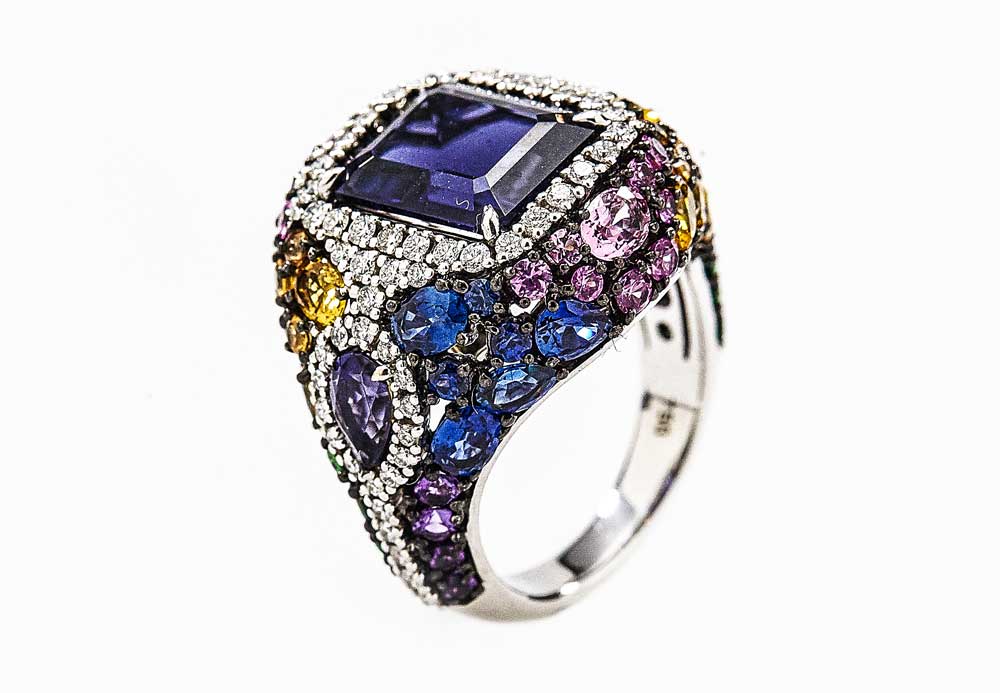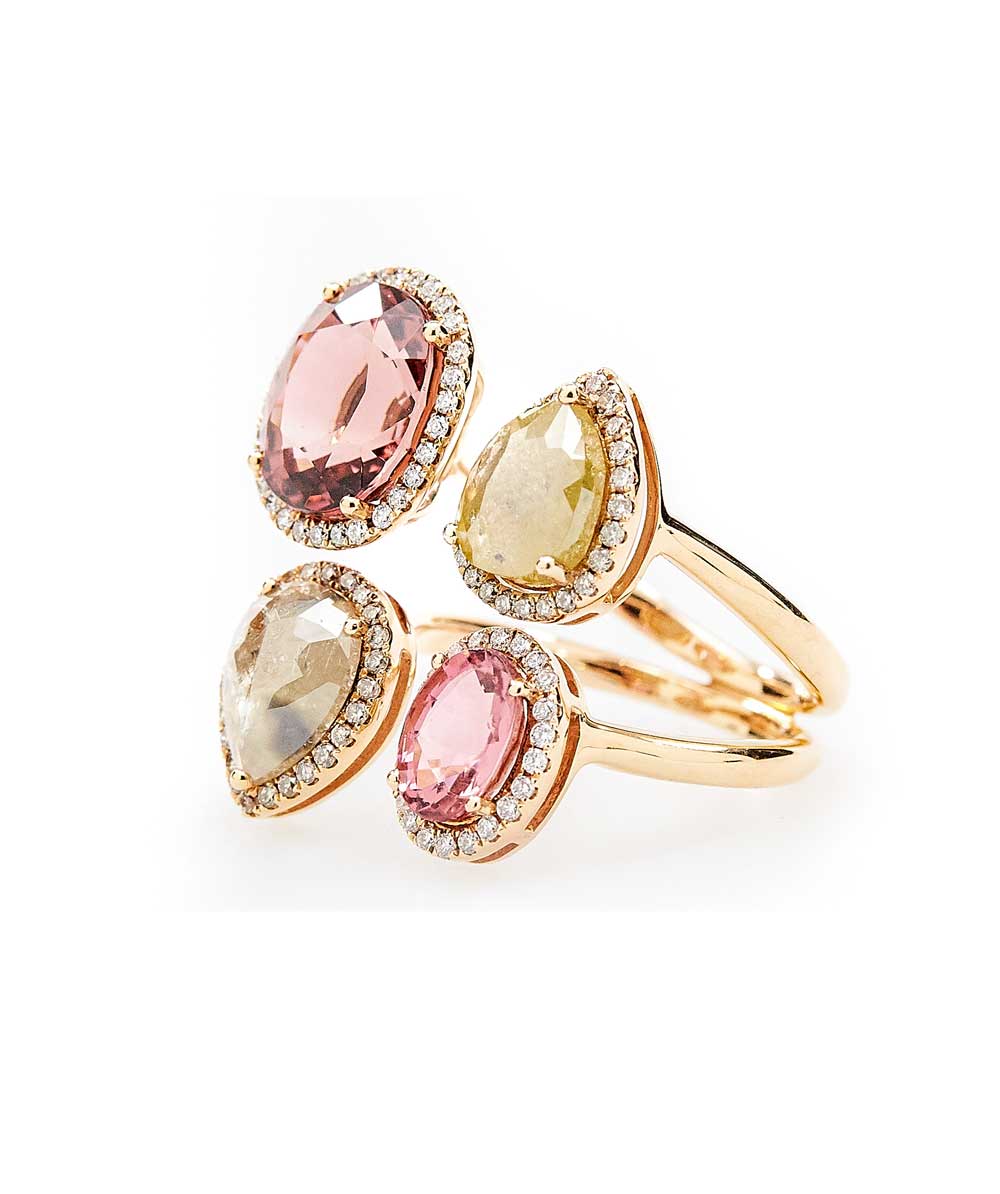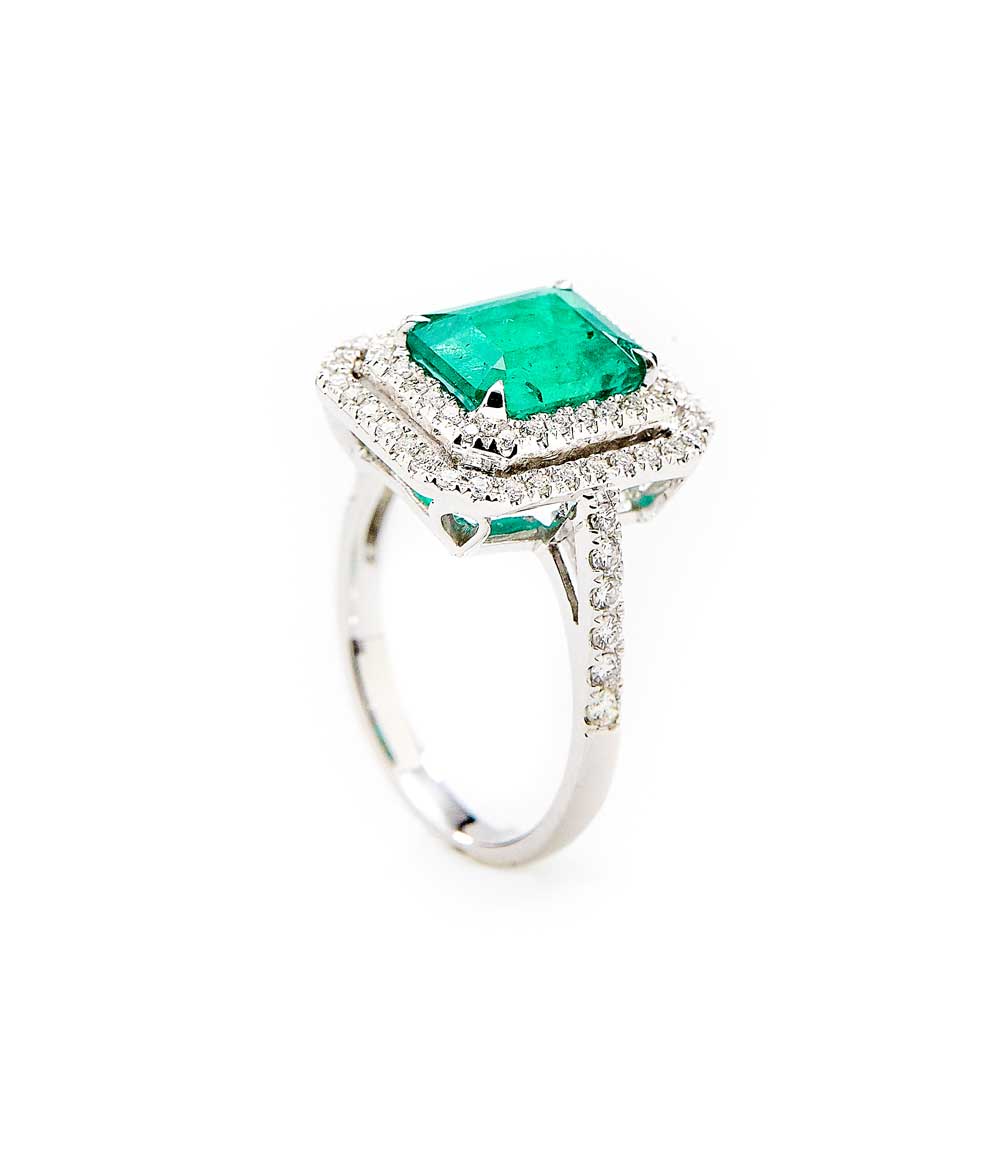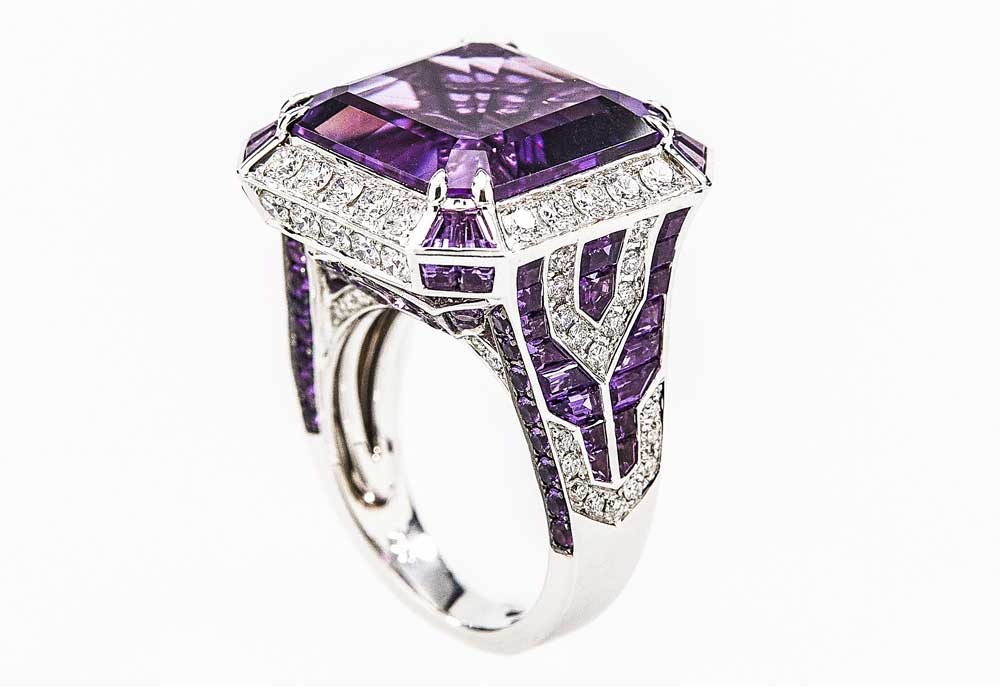Know Your Coloured Gemstone
Beauty plays the most important part in a coloured stone. The richness of its colour, how much light it scatters when you tilt it in different directions, its degree of brilliance and how it has been cut and polished – all add beauty and value to a stone.Years ago, gems were classified by colour alone. But not so today. There are many factors that determine the value (and price) of gems.
TYPE OF GEMS
TRAITS OF GEMS
All gems share three important traits in various levels: beauty, rarity and durability.
Beauty
Although definitions of beauty rary amongst individuals, a combination of qualities help determine the beauty of gems.
- Colour is what makes a gem visually attractive – from the deep green of a fine emerald to the shrfting colours in an opal. For this reason, colour is typically the first consideration when choosing gems.
- Symmetry means the balance and harmony of cut. The right proportions and shape enhance the gems beauty.
- Lustre is the gem’s surface apprearance, usually polished to a high shine.
- Transparency is how the light passes through the gem. Transparent gems such as emerald, garnet and tanzanite should allow light to pass through with little or no distortion. Opaque stones such as turquoise let no light through, while gems such as opal have different degrees of transparency.
RARITY
Some gems are more rare than others. On a whole, most gems come in the middle of the rarity scale. However, rarity alone doesn’t make a gem valuable. Pink spinel, for example, is lovely, durable and rare. but few people know it or want to purchase it.
At Qasim Jewels, all our coloured gemstones go through strict control for superior beauty and brilliance. Our stones disperse fire and scintillate. They endure longer and are purer. Every piece is made sturdy to last and always perfect. We want you to buy with confidence and enjoy the benefits of our lifetime services.
DURABILITY
Durability is a combination of three factors: hardness, toughness and stability.
- Hardness is how well a gem resists scratching or abrasion.
- Toughness is how well a gem withstands breaking, dlipping and caracking.
- Stability is how well a gem resists the effects of light, heat an chemical.
All gems have varying combinations of these factors. Topaz is relatively hard but has poor toughness, while Jadeite is not as hard as Topaz but is exceptionally tough. Cleaning solutions used for sapphire cannot be used on peridot, while sunlight fades kunzite over time.
THE 4C's TO COLOURED GEMSTONES
COLOUR
Although colour alone doesn’t determine the value of a gem, it is certainly the most dazzling and attractive feature of a gem – and what draws you first to a particular choice of stone.
Each gem has its own colour range. Within that colour range, fine colour is what is preferred by jewellery expects. It is usually a colour that is medium to dark in tone and high in saturation.
CLARITY
Gemstones rarely come without flaws, but the lesser of them, the more rare and valuable the gem.
- Blemishes are irregularities on the surface of a gem, such as scratches and abrasions. They have little or no effect on the gemstone’s appearance unless they are particulary large in size or number.
- Inclusions are irregularities that are enclosed within the gem. These include breaks, pockets of fluid or foreign mineral crystals.
Together, blemishes and inclusions make up the clarity characteristics of a gemstone that influence its appearance, value and rarity.
For some gems, natural formation make it common for these stones to have inclusions. these include emerald and red tourmaline. For others, such as aquamarine or topaz, inclusions are not as common place and will lower its value.
Some inclusions however, add to the variety and individuality of a stone. Phenomena such as cat’s eyes and stars, composed of long and thin intersecting crystals, make stones such as blue sapphires all the more valuable. Sometimes, inclusions help distinguish natural gems from synthetics.
CUT
The way a gemstone is cut significantly contributes to a gemstone’s appearance. It can help effectively display the colour of a gemstone, eliminate or strategically position inclusions for better clarity, or effect the carat weight of the stone.
- Shape is the stone’s outline, face-up. The round shape is the most familiar, while all others are classified as fancy shapes. These include emerald cut, cushion, oval, pear, marquise and heart, among others
- Style is the stone’s facets. There are three basic styles – brilliant cut, step cut and mixed cut.
Besides faceted styles, two other most popular coloured stone cutting styles are:
- Cabochons. This technique is used for translucent or opaque stones such as jade or turquoise.
- Caruings. Also known as a cameo design, this form of carving is often a woman’s profile, sculpted tp project slightly frantic surface. There are usually done on shell or onyx.
The Difference Between Diamond and Coloured Stone Cuts.
- Shape: Diamond display excellent transparent properties that can be enhanced to the maximum with precisely proportionate cuts and brilliant finish. With coloured stone, the aim of the cut is to showoff the gem’s best colour.
- Weight: Diamonds are usually cut into rounds to yield maximum weight, while coloured gems retain more weights when cut into fancy shapes.
CARAT
Like diamonds, coloured gems are measured in carat. 1 carat equqls to 0.2 grams. Some gems are heavier than others, so the same weight stone may be a different size.
A WORD TO THE WISE
Gemstones come from all sorts of exotic locations. But don’t be carried away by the enchanting sound of faraway counties. Traditionally, certain places have earned a reputation for producing quality gems – Myanmar for rubies, Kashmir for sapphires and Colombia for emeralds.
However, not all gems from there can be acclaimed for exceptional quality. Likewise, fine qualities gems can also be found from other sources.
Besides the above, Qasim Jewels gemstones are of stricter standards. At every step in the crafting process, our coloured gemstone is fully inspected to assure that it has a smooth finish, free of significant scratches or minute flaws, so you can confidently extend your personal jewellery collection to include one of these precious stones which will become heirlooms in years to come.






